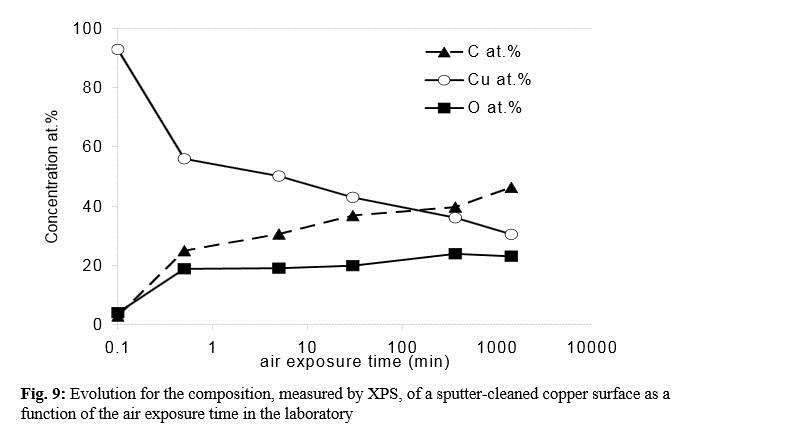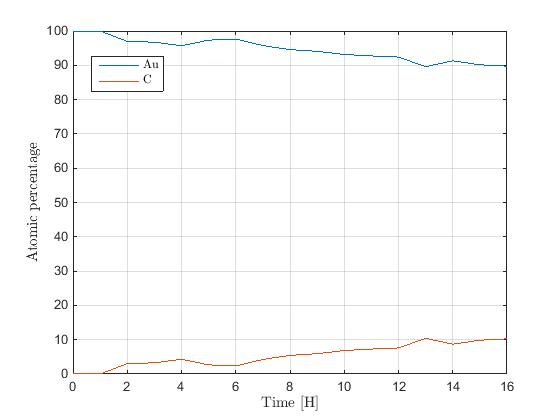Specific Process Knowledge/Characterization/XPS/Carbon contamination: Difference between revisions
No edit summary |
No edit summary |
||
| Line 1: | Line 1: | ||
'''Feedback to this page''': '''[mailto:labadviser@nanolab.dtu.dk?Subject=Feed%20back%20from%20page%20http://labadviser.nanolab.dtu.dk/index.php/Specific_Process_Knowledge/Characterization/XPS/Carbon_contamination click here]''' | |||
<!--Checked for updates on 2/10-2020 - ok/jmli --> | |||
<!-- Ok, jmli 20170627 --> | <!-- Ok, jmli 20170627 --> | ||
<!--Checked for updates on 2/10-2020 - ok/jmli --> | <!--Checked for updates on 2/10-2020 - ok/jmli --> | ||
Revision as of 14:23, 2 October 2020
Feedback to this page: click here
Carbon Contamination
--kare (talk) 09:29, 18 February 2015
An unexpected carbon signal is often found in samples during XPS. The carbon typically originates from sample exposure to the air outside the XPS (e.g. the lab). Measurements of carbon contamination of a sputter cleaned Cu sample due to air exposure indicates that carbon contamination builds up to 20 At. % in approximately one minute.
Measurements of the At. % of C on the Au-reference in the XPS after an initial sputter clean were conducted for 16 hours every hour. The results show that carbon is detectable after 1-2 hours and gradually builds up at a rate of approximately 0.6 At. percentage points per hour, i.e. much slower than if the sample is exposed to air. Thus carbon contamination on samples in the XPS typically originates from air exposure.


